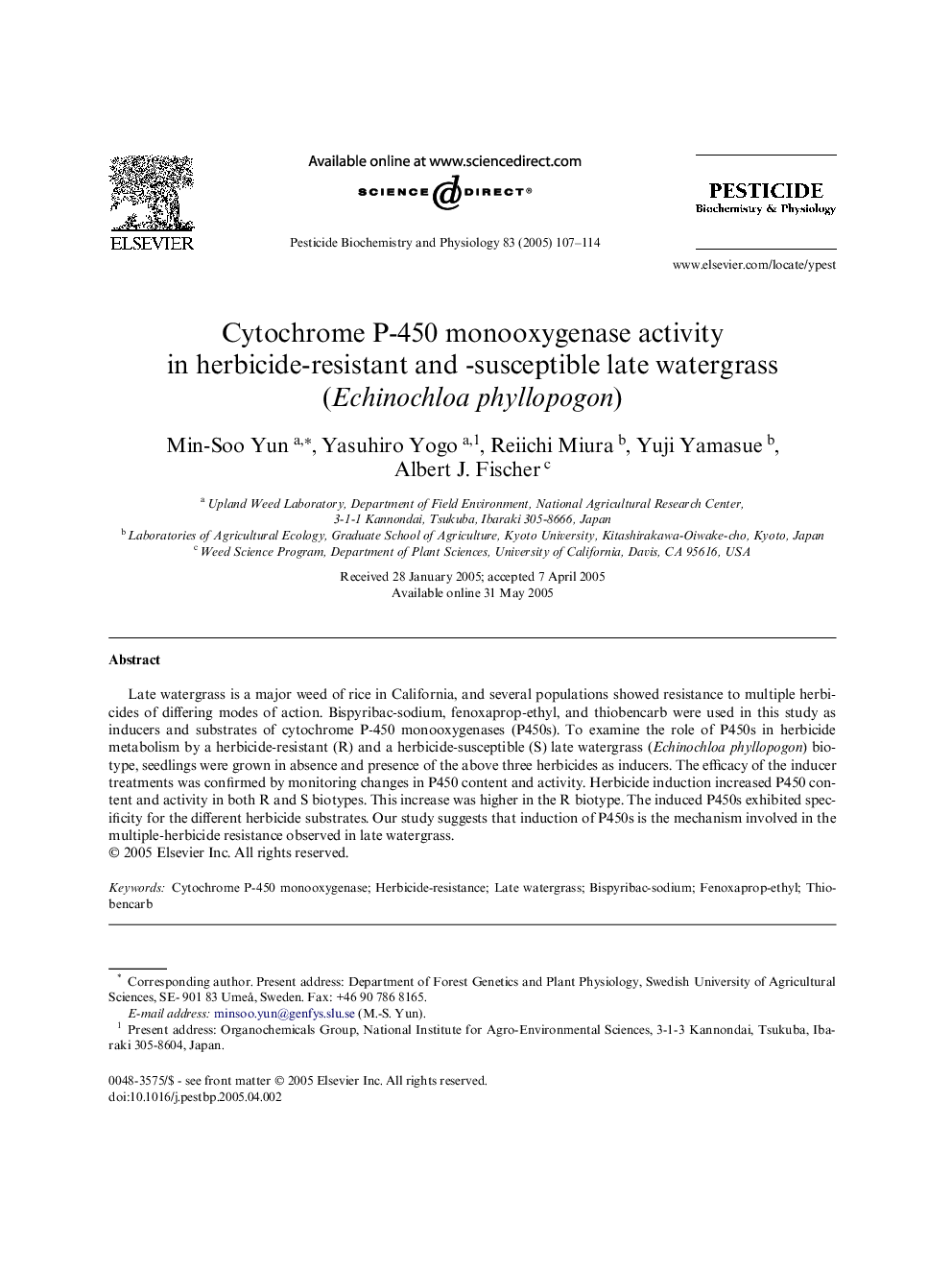| Article ID | Journal | Published Year | Pages | File Type |
|---|---|---|---|---|
| 9893518 | Pesticide Biochemistry and Physiology | 2005 | 8 Pages |
Abstract
Late watergrass is a major weed of rice in California, and several populations showed resistance to multiple herbicides of differing modes of action. Bispyribac-sodium, fenoxaprop-ethyl, and thiobencarb were used in this study as inducers and substrates of cytochrome P-450 monooxygenases (P450s). To examine the role of P450s in herbicide metabolism by a herbicide-resistant (R) and a herbicide-susceptible (S) late watergrass (Echinochloa phyllopogon) biotype, seedlings were grown in absence and presence of the above three herbicides as inducers. The efficacy of the inducer treatments was confirmed by monitoring changes in P450 content and activity. Herbicide induction increased P450 content and activity in both R and S biotypes. This increase was higher in the R biotype. The induced P450s exhibited specificity for the different herbicide substrates. Our study suggests that induction of P450s is the mechanism involved in the multiple-herbicide resistance observed in late watergrass.
Related Topics
Life Sciences
Agricultural and Biological Sciences
Agronomy and Crop Science
Authors
Min-Soo Yun, Yasuhiro Yogo, Reiichi Miura, Yuji Yamasue, Albert J. Fischer,
